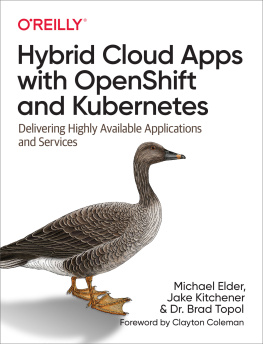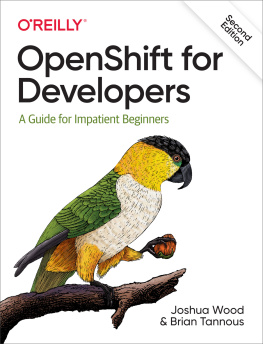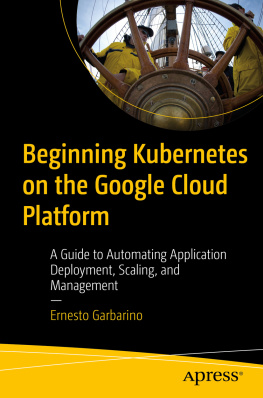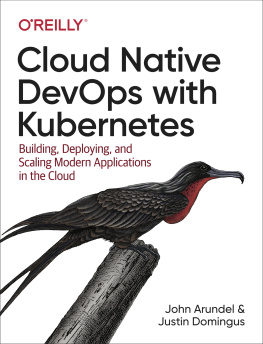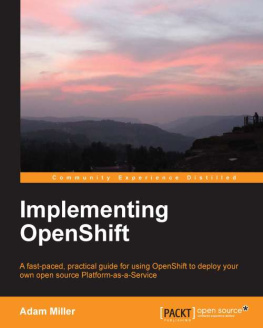To Wendy, for your love and encouragement. To Samantha, for your fearlessness and curiosity about all things in life. To David, for your inspirational smile and laughter. To my mother, Betty, for your amazing tenacity through all of lifes challenges while remaining optimistic about the future.
Great thanks go to my wife, Becky, for her love and support. To Oren goes my gratitude for his laughter and caring spirit. Thank you to my parents, Nancy and Barry Kitchener; without their example I would not have the tenacity to take on the trials of life.
I dedicate this book to my wife, Janet; my daughter, Morgan; my son, Ryan; my sister, Marci; and my parents, Harold and Mady Topol. I could not have done this without your love and support during this process.
Foreword
Software is integral to every industry today. From web and mobile apps that accelerate the digital transformation of business, to more efficient backend systems that support the growth of your business, to technology thats embedded in devices as part of everyday life, containers have established themselves as a fundamental aspect of software delivery and operation across the spectrum.
The operations and applications teams powering these transformations are seeing their application footprints grow tremendously in multiple locations, clouds, data centers, and out to the edge. The bigger the organization, the broader the footprint and the more complex the challenges. As cloud becomes an integral part of application deployment, organizations also wish to modernize their existing footprints and accelerate their development teams.
So what has powered these trends? Open source technologies enable standardization, which leads to an explosion of ecosystem benefits and approaches, which then leads to a need for new standardization. As one of the most successful open source ecosystems, Kubernetes has created a significant change in how we build and run applications .
A key question that is probably on your mind is how to balance velocity and flexibilityscaling, integrating, and simplifyingwhile increasing your teams ability to deliver value. Your organization may be heavily driven by your application teams, organically adopting new services in cloud footprints. In that case, you are likely focused on how to bring consistency of operational concerns to greenfield projects while minimizing disruption to teams.
Your organization may have a broader focusactively spanning the full spectrum of compute, including devices at the edge, gateways and local application processing in data centers, visualization, and archival in the cloud. These true hybrid applications have unique needs at each location, but that location-specific behavior only strengthens the need to keep operational concerns aligned.
Finally, your organization may run workloads similar to a large percentage of enterprise applications that are becoming truly cloud-agnostic. Thanks to modern application development frameworks, tools, and application infrastructure like Kubernetes, the underlying details of the infrastructure are less of a barrier to application portability and availability. For an organization aspiring to be cloud-agnostic, you are probably building a platform to consolidate and automate the life cycle of your business. The modern platforms to support hybrid cloud must address a number of serious challenges such as security, data consolidation, cost management, and increasing developer velocity to serve the applications that run your business.
As one of the founding members of the Kubernetes project and as lead OpenShift architect, Ive spent the last seven years working to help large enterprises and small teams find that middle ground, as well as to ensure a consistent application environment across cloud, datacenter, and edge that enables customer platforms to succeed.
As Kubernetes has matured, so has the complexity and scale of user successes. The hockey stick of growth has taken us into broad adoption, and its the right time to take stock of the challenges, patterns, and technologies that can help bring that growth under control.
This book dives deep on the problems and solutions that the most successful enterprise Kubernetes teams have encountered and gives you a trusted path to follow. The fusion of perspectives is keyfrom Brads work in the community driving consistency across open source projects and finding common ground for users, to Jakes expertise in building and running cloud-scale Kubernetes with IBM Kubernetes Service and IBM Red Hat OpenShift Service, to Michaels deep focus on helping organizations consolidate and secure multicluster Kubernetes as architect to Red Hats Advanced Cluster Management product.
Together they represent an immense amount of practical experience in how to leverage Kubernetes effectively at scale in a way that can help organizations support their growing application fleet, whether it be cloud-first, multicloud, or connected to the edge.
As we continue to standardize and simplify how applications are built and deployed across a wide range of environments, open source and open ecosystems help organizations collaborate towards shared goals. Kubernetes and other tools in our ecosystem are fundamental building blocks toward that end, and this book will help you navigate the trade-offs and opportunities along the way.
Clayton Coleman

